Isabela - the Wild One
- Marion Marquardt
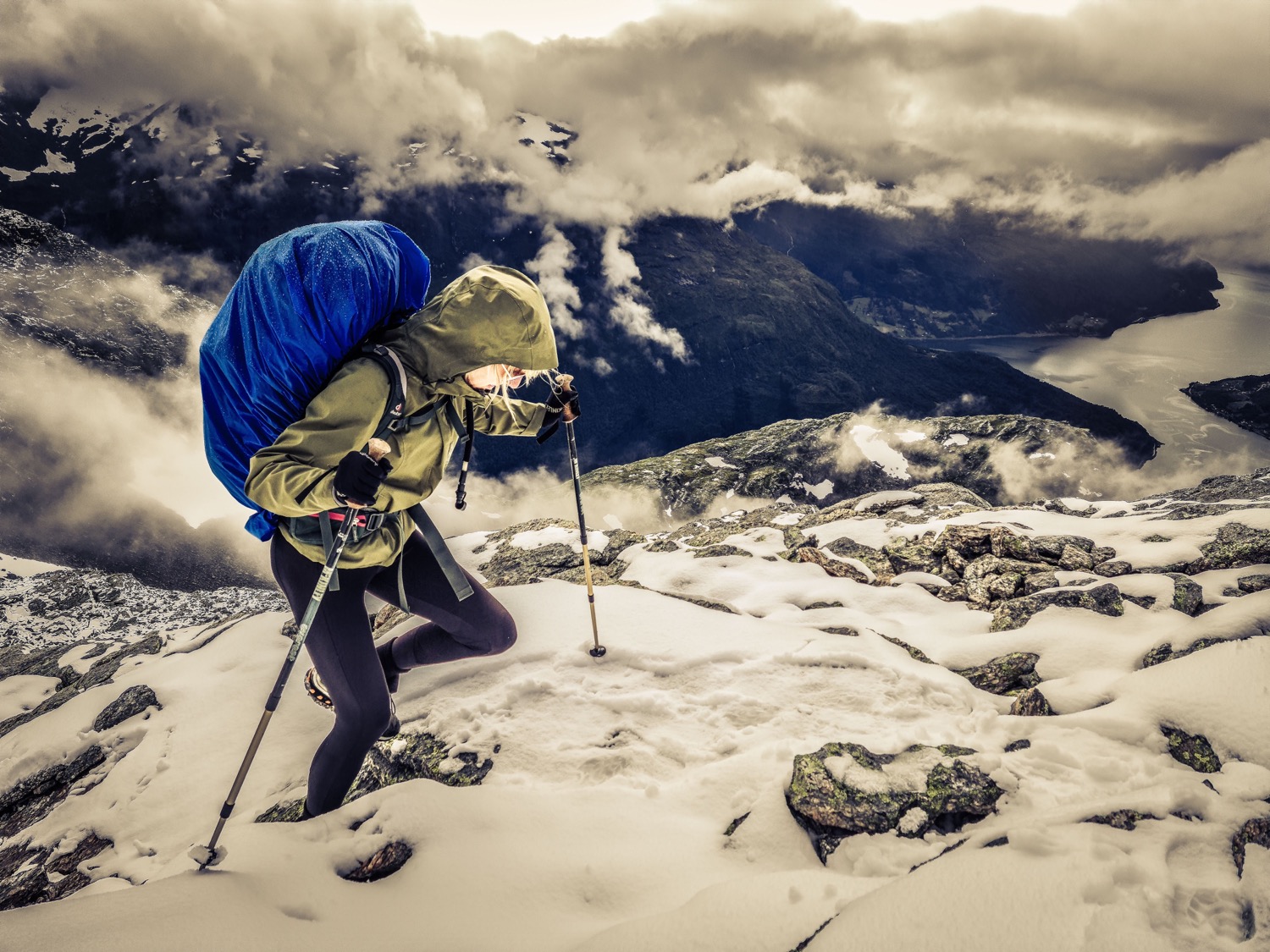
- Nov 28, 2024
- 6 min read
Isabela - endless beaches
Los Tùneles - the icing on the cake of my Galapagos snorkeling series
Galapagos penguins on the Tintoreras Islands
Tortuga Island - top or flop?
We're on Isabela, the last stop on our Galapagos tour. According to locals and other travelers, it's the most beautiful of all the islands. We have six days to form our own opinion. This time we're arriving by light aircraft. From San Cristóbal, it would otherwise be two three-hour boat rides with a stopover on Santa Cruz spread throughout the day. Unfortunately, our flight across the Galapagos archipelago doesn't provide much other than time savings. Early in the morning, low clouds hang over the islands. Arriving on Isabela, we immediately notice the difference. Things are much more relaxed here. Before 9 a.m., you hardly see anyone on the roads; and they're unpaved, by the way. It's also much cooler, though.
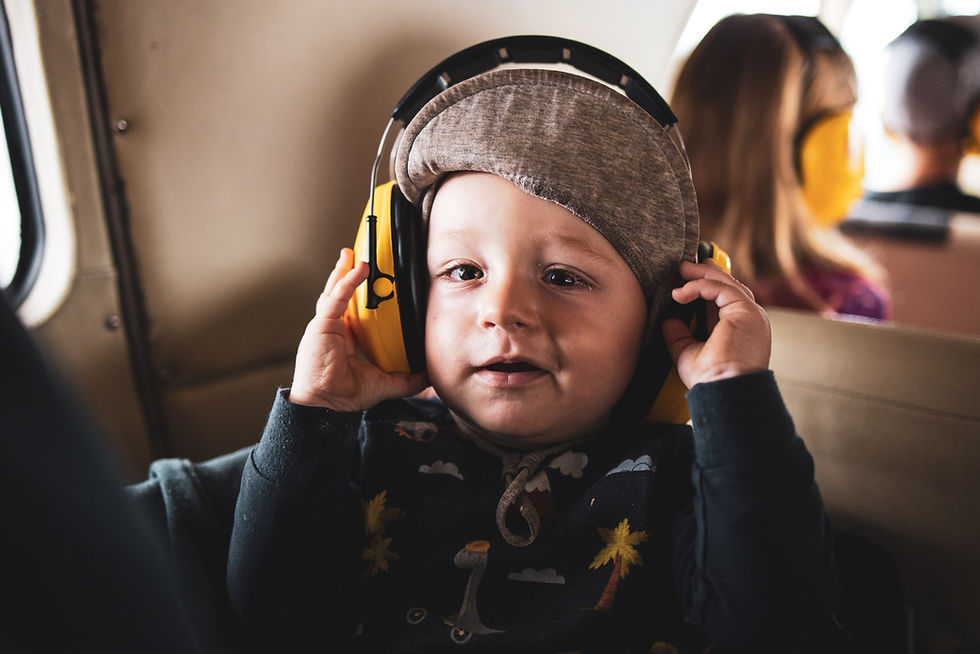
In the afternoon, we rent bikes and ride to the Wall of Tears, the only remaining remnant from the days before the national park, when this island was an Ecuadorian prison camp. And today, tourists pay exorbitant amounts of money to be here. The stone wall isn't a highlight, but the journey is the destination. There are frequent detours to the sea. We visit the mangrove beach of El Estero, where freshwater flows into the ocean. It's a beautiful place and a paradise for pelicans and blue-footed boobies, which fish for sardines. Unfortunately, we don't see their relatives, the red-footed boobies. They live only north of San Cristobal and on the island of Santa Fé, where the Humboldt Current provides the most tuna, their main food source. Within the booby family, they aren't mutual predators; incidentally, their diet is responsible for their foot color.
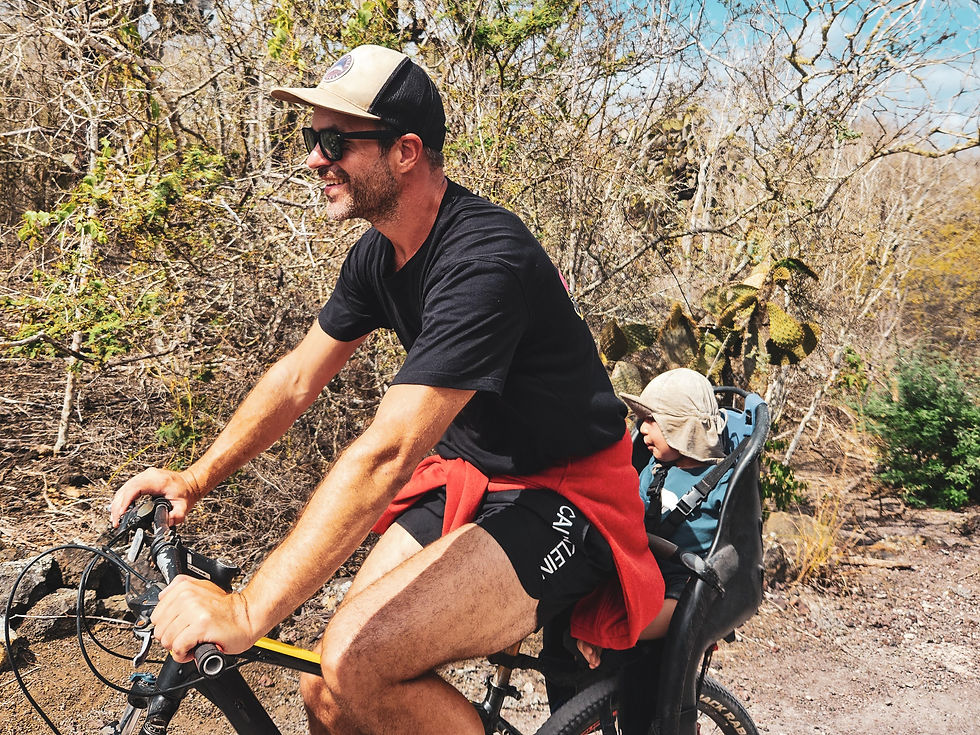
The next day, I go on a snorkeling tour to Los Tùneles – the place is practically hyped among tourists and tour operators. I'm excited. This is one of the few excursions we'll do separately. A boat trip alone wouldn't make sense with Diego, especially since Micha has unfortunately caught hypothermia and is battling a cold. Snorkeling isn't a good idea. The water temperatures on Isabela are significantly cooler than on the other islands. This is due to the cold Cromwell Current, which hits the island from the west. Isabela is also arguably the most biodiverse island. And I'm not disappointed. I see the largest sea turtles in my Galapagos snorkeling series, spotted eagle rays, Galapagos stingrays, seahorses, and even whitetip and blacktip reef sharks. I hadn't expected that at all. The reef sharks hunt at night, and during the day they rest in caves or warm channels. This makes them quite easy to find if you know the places. They are the only sharks that don't need to swim to breathe. They pump water into their gills by moving their mouths; their slightly open mouths give them a somewhat aggressive appearance; however, they are very peaceful creatures.
Later, we walk over the lava formations of the Tùneles. As the name suggests, there are many lava tunnels here. They can only form when the magma slowly cools and, after the surface has cooled, more of it flows inside at night. None of this would be possible today with the current sea level. However, at the time the islands formed, it was an ice age, particularly in Europe and Africa, so the sea level was much lower. Incidentally, Isabela still has five active volcanoes. The island is directly above the hotspot, the fragile part of the tectonic plate where submarine eruptions gave rise to the Galapagos Islands. The archipelago lies on the Nazca Plate and is moving with it towards the mainland, about 5-7 cm per year. However, the islands will never reach the continent, as the Nazca Plate is pushing underneath the South American Plate. Researchers have discovered that there are already submerged islands in the eastern part of the archipelago. The same thing will happen to San Cristóbal in the distant future. However, we won't see that happen any more than we will see the potential emergence of new Galapagos Islands on the hotspot. A matter of millions of years.

On the way back, we circle Union Rock; this is where Nazca boobies rest. They primarily hunt tuna. Their name comes from the Peruvian province of Nazca, where the main colony originates. They now stay in the Galapagos year-round and have slightly altered genes.
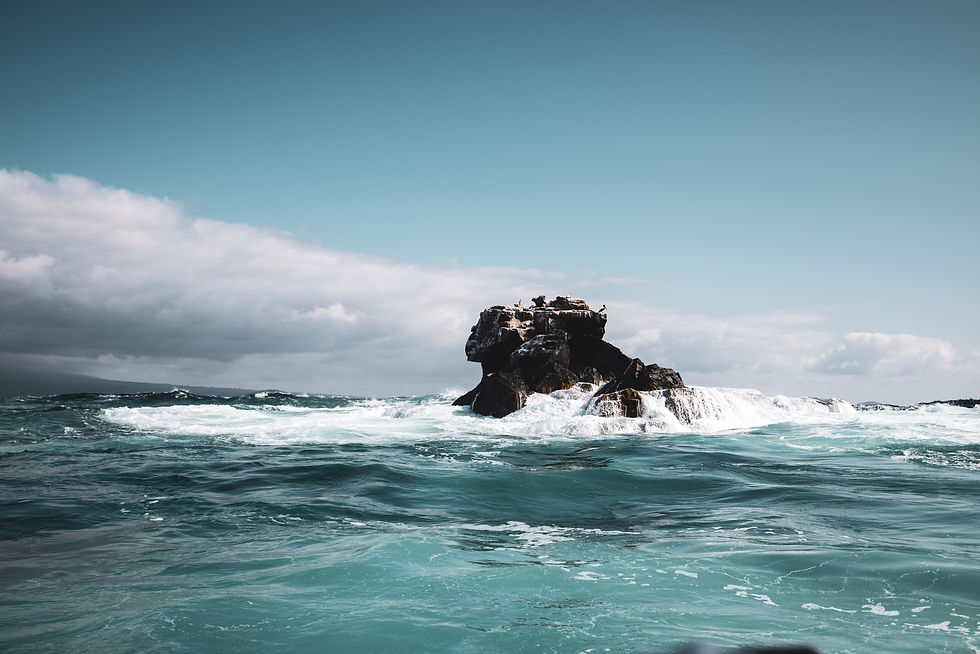
On the Tintoreras Islands off Isabela, we even see Galapagos penguins. They are the only penguins north of the equator and are now, sadly, threatened with extinction. Their greatest threat, besides their natural predators on land and in the water, is the El Niño phenomenon, which causes a lack of food due to rising water temperatures.
Marine iguanas can be seen everywhere here too. They are the only lizards in the world that go into the water to feed. Evolution on the Galapagos Islands has also ensured this. For a long time there was no vegetation on the barren land; it only appeared 1,000s of years after the volcanic origins. On some islands, where there were already cacti, land iguanas developed; on most, the marine iguanas had to go into the sea to eat algae. They are still vegetarian today. Because they are cold-blooded, they have developed black skin so they can absorb heat better and faster. During the day they lie in the sun for many hours and store the heat, so that they can then dive for food for a maximum of 20 minutes without becoming hypothermic. Another example of Darwin's theory of evolution.
Finally, Micha takes a day trip to Tortuga Island. There's apparently a good chance of seeing hammerhead sharks and manta rays there. Expectations are high. After all, he's been without snorkeling for almost a whole week because of his cold. Unfortunately, he's disappointed again and only sees the hammerhead sharks far in the distance. On the way back, they catch some tuna. Guide Roy serves them in the evening as ceviche and from the grill, along with beer and mojitos. A small consolation.
We'll spend the last day together in a relaxed atmosphere. Beach, playground, bar, sunset—there's something for everyone!
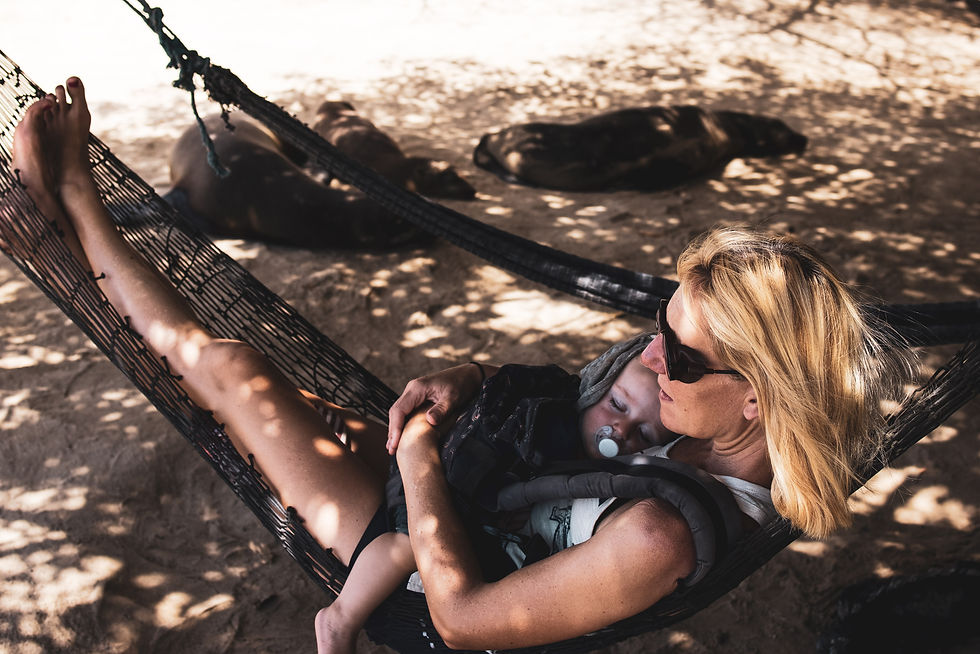
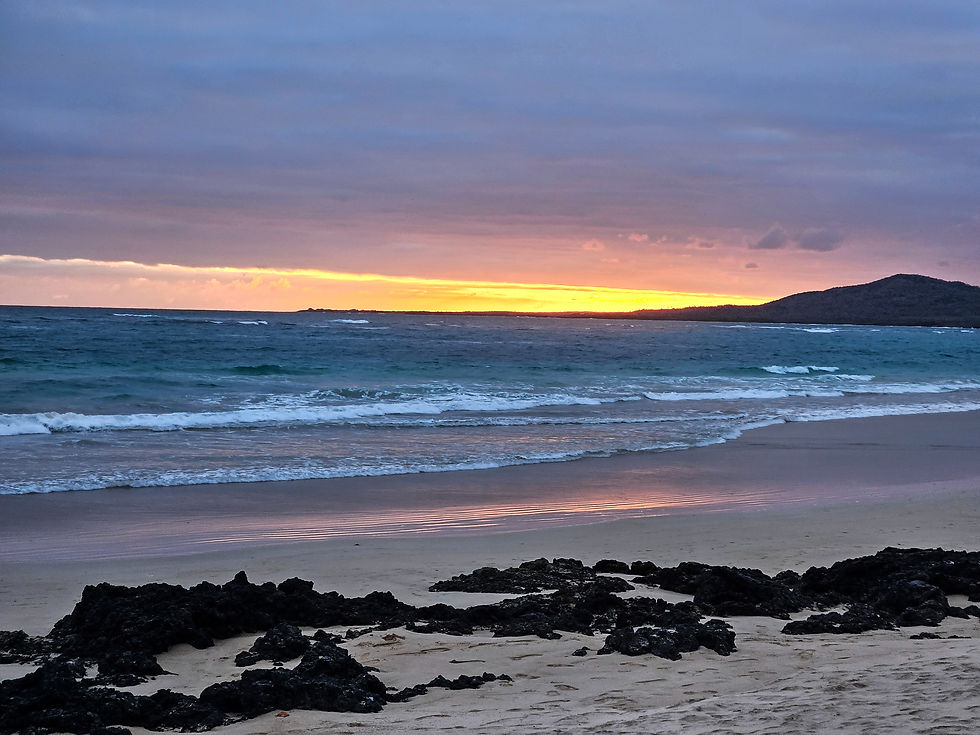
So, what's our conclusion about Isabela? We don't have a favorite island. Isabela is definitely very beautiful and—compared to the other inhabited islands—has a kilometer-long sandy beach right on its doorstep, with surfing potential. We prefer the townscapes of other islands. We're glad to have spent a few days on all the inhabited islands. Each is special in its own way. What they all have in common is the unique wildlife, which isn't afraid of humans. Nowhere else can you observe animals in such a relaxed manner. And the tele lens is rarely needed :-)
------------------------------------------------------------------------------------------------------------------------------------------------------------------------------------------------------------
Finally, here are a few recommendations that we would have liked to have had for our travel planning and thus saved a lot of transfer time and money:
Both the island of Baltra, north of Santa Cruz, and San Cristóbal offer connections to the mainland of Ecuador (usually Guayaquil). For island hoppers, a multi-leg flight is a good option.
Fast ferries operate twice daily between the inhabited islands. In our experience, we could have booked these on-site for significantly less money. There were always a few free spots.
All day tours can be booked at short notice, without any agency or broker fees. At least during our travel period in November, there was a significant oversupply. This also applies to cruises, of course; however, if you have a tight schedule or are fixated on a specific ship/route, it's best not to wait too long.
If you're taking a cruise, find out the start and end location/ harbour. These are often unclear from the itinerary. Our cruise, for example, started at the dock in Baltra and ended in Puerto Ayora. With this knowledge, we could have optimized the order of the itinerary components and saved ourselves a lot of logistical hassle.

















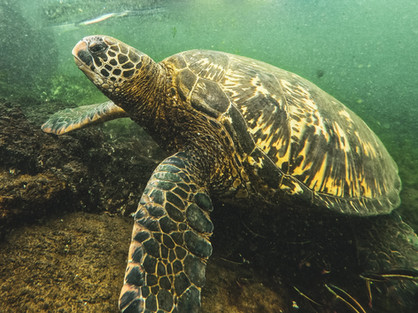















Comments